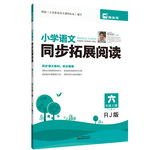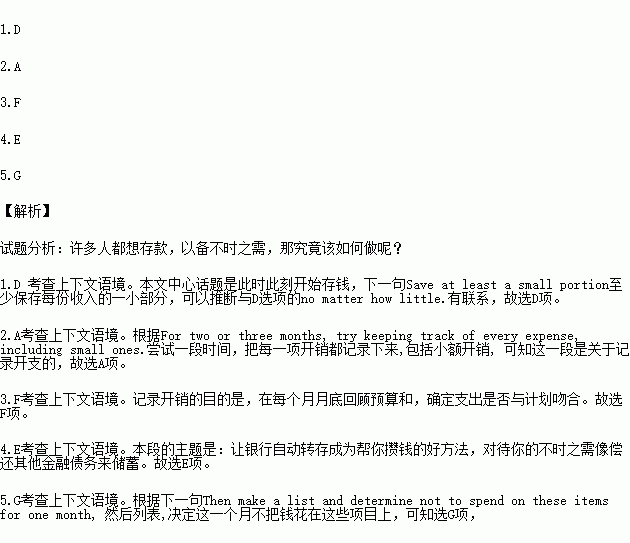题目内容
根据短文内容,从短文后的选项中选出能填入空白处的最佳选项。选项中有两项为多余选项。
Many people admit that they aren't prepared financially for life's unexpected challenges and emergencies. If your New Year's decision is to become more financially prepared for a“rainy day” the following tips are helpful for you to save,
Start saving now.
Set specific savings goals and break them down to a set dollar amount to save each paycheck. 1. Save at least a small portion of each paycheck and remain committed to saving, and then look for ways each month to increase the amount.
2.
One of the simplest ways to find money to put toward your rainy day fund is to keep a close eye on where your money is being spent. For two or three months, try keeping track of every expense, including small ones. Once you have a better idea of where your money is going, make a budget that includes a spending and savings plan. 3.
Make saving automatic.
4. If your goal is to save $5,000 this year, calculate the amount you'll need to save from each paycheck, then arrange to have it automatically saved into your savings account each time you get paid. Visit your bank branch and ask a banker if you can set up automatic transfers into your savings account.
Go on a spending diet.
Avoid spending any money on non-essentials for 30 days and challenge yourself to save as much as you can to put toward your rainy clay fund. 5. Then make a list and determine not to spend on these items for one month,
A. Track your spending.
B. Put your savings to work.
C. Do remember: Actions always speak louder than words.
D. The important thing is to start saving now, no matter how little.
E. Treat your rainy day account like you'd treat any other financial obligation(债务 ).
F. Review your budget at the end of every month and determine if your spending is in line with your p1an.
G. Review your budget and identify extra or non-essential expenses, such as eating out, shopping. entertainment, etc.
 口算心算速算应用题系列答案
口算心算速算应用题系列答案 同步拓展阅读系列答案
同步拓展阅读系列答案

 h a place. “What’s the difference?” the farmer said angrily. “If I had planted the tree near the , passers-by (行人)would have stolen the fruit. If I had planted the tree in one of my fields, my neighbors would have come at night and _ some of the apples! If I had planted it near my house, my own children would have taken the . No matter where I plant the tree, I can’t have to enjoy the apples. So there is no difference where I planted it.”
h a place. “What’s the difference?” the farmer said angrily. “If I had planted the tree near the , passers-by (行人)would have stolen the fruit. If I had planted the tree in one of my fields, my neighbors would have come at night and _ some of the apples! If I had planted it near my house, my own children would have taken the . No matter where I plant the tree, I can’t have to enjoy the apples. So there is no difference where I planted it.”